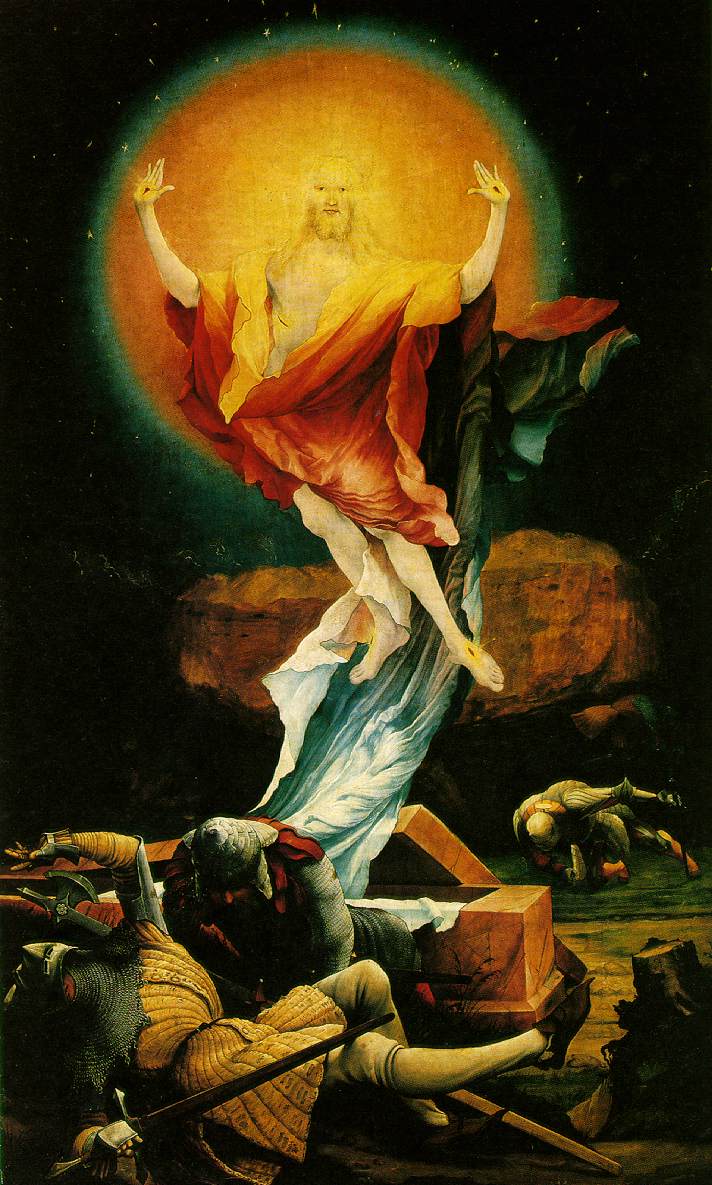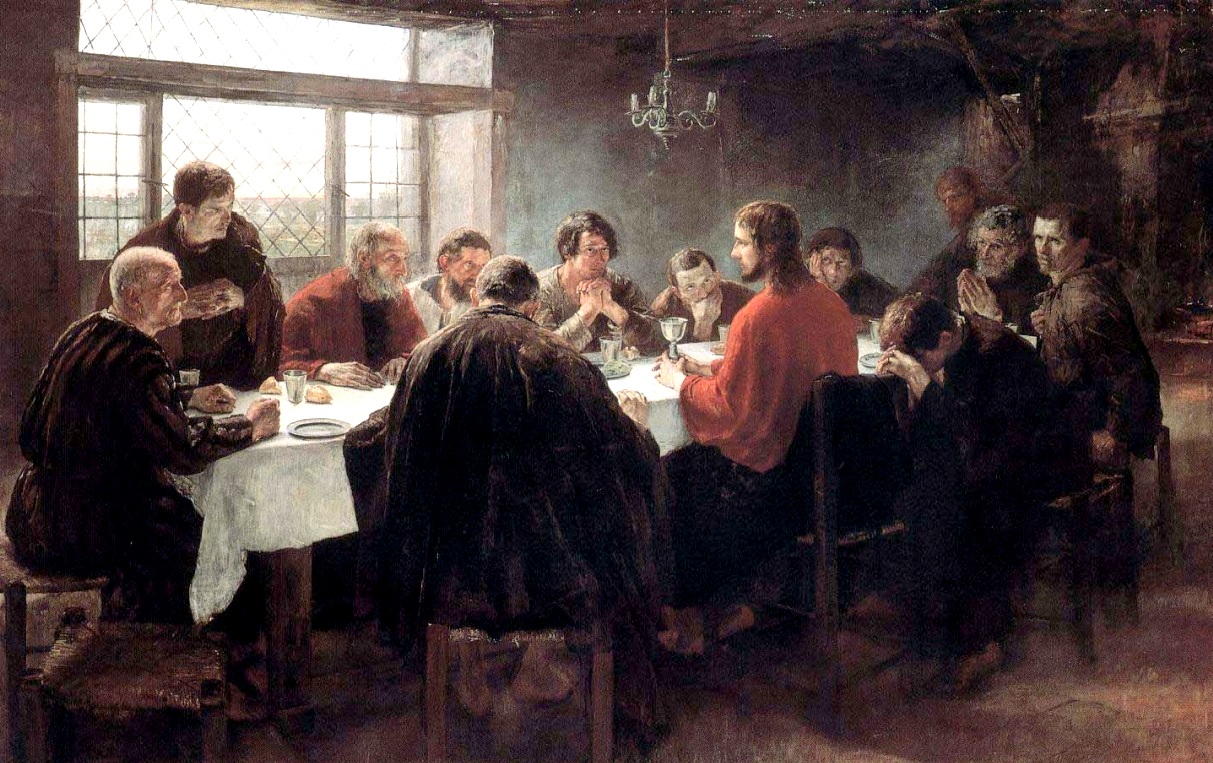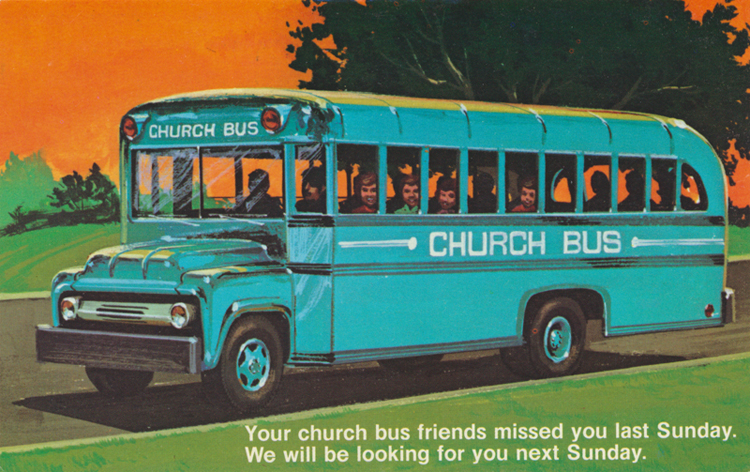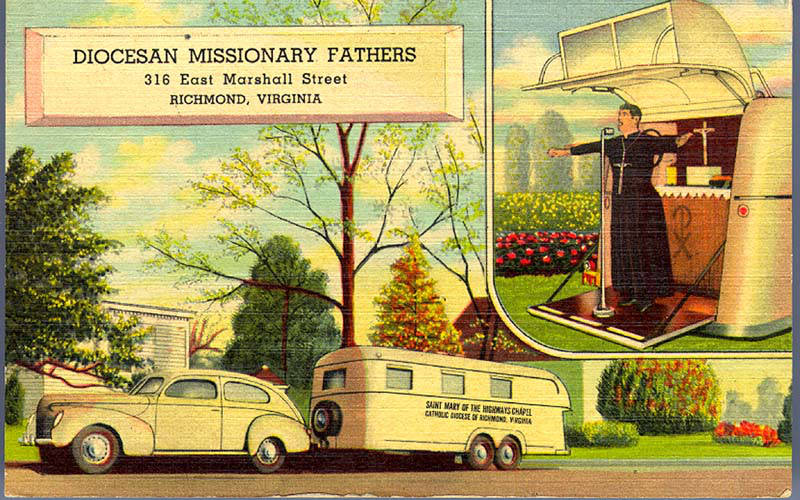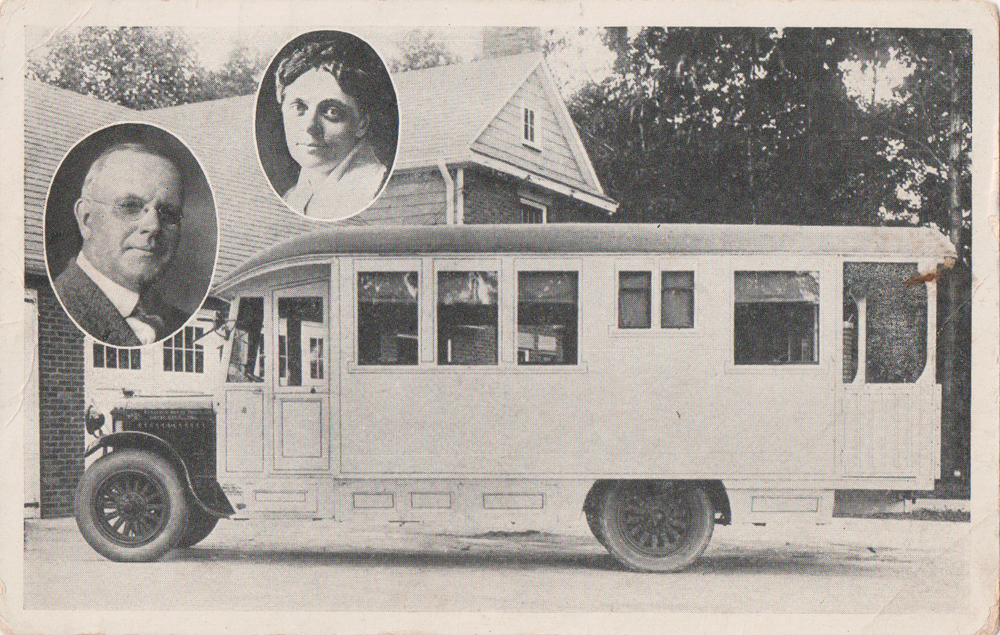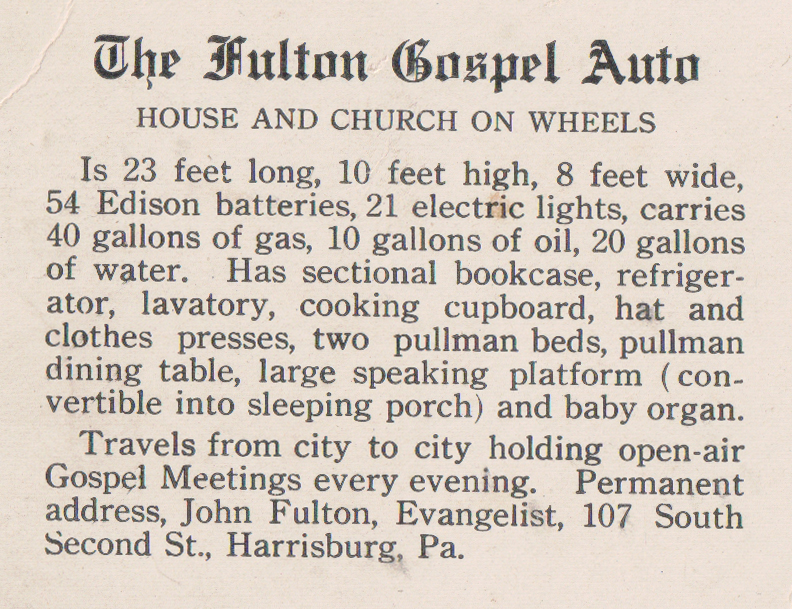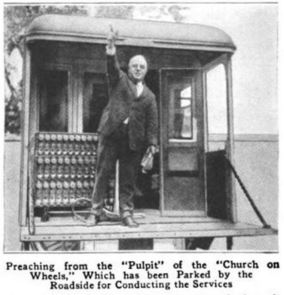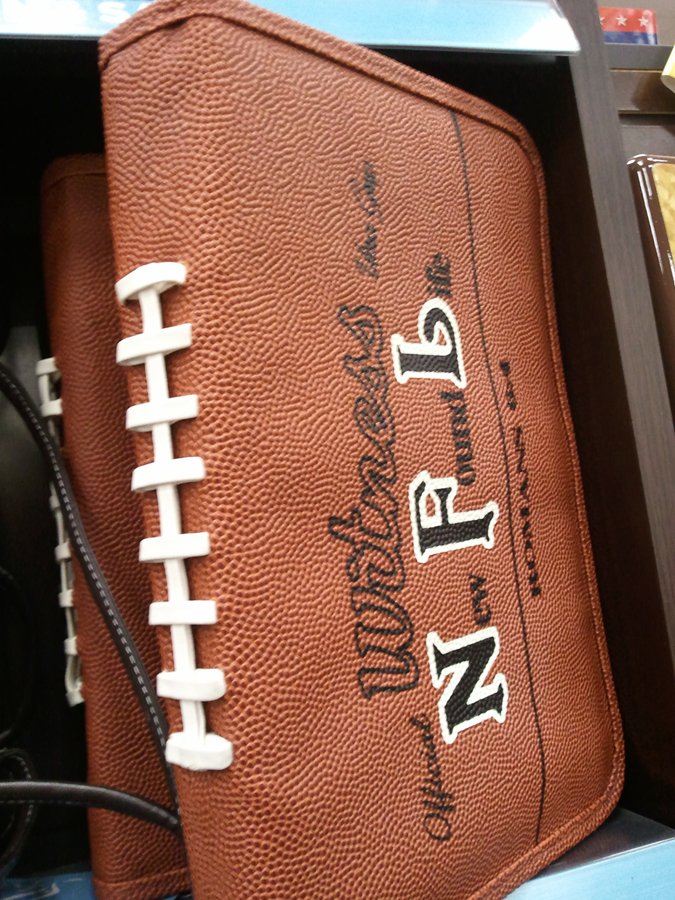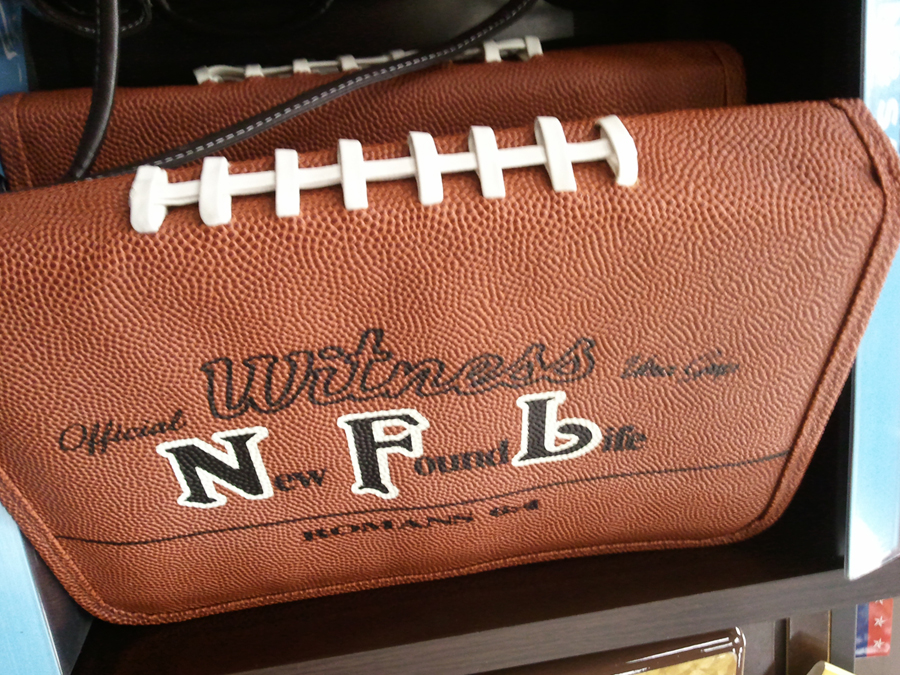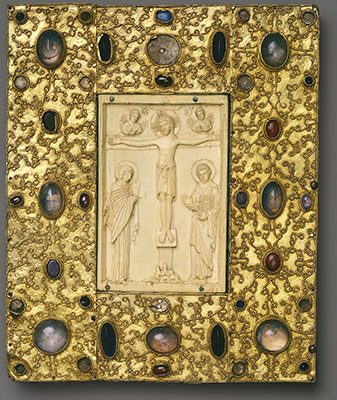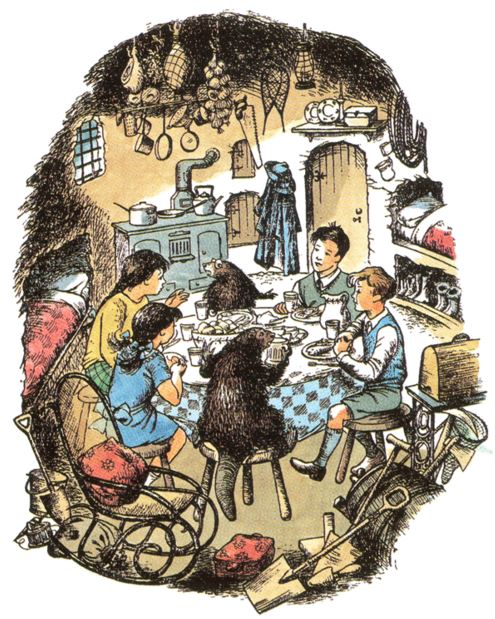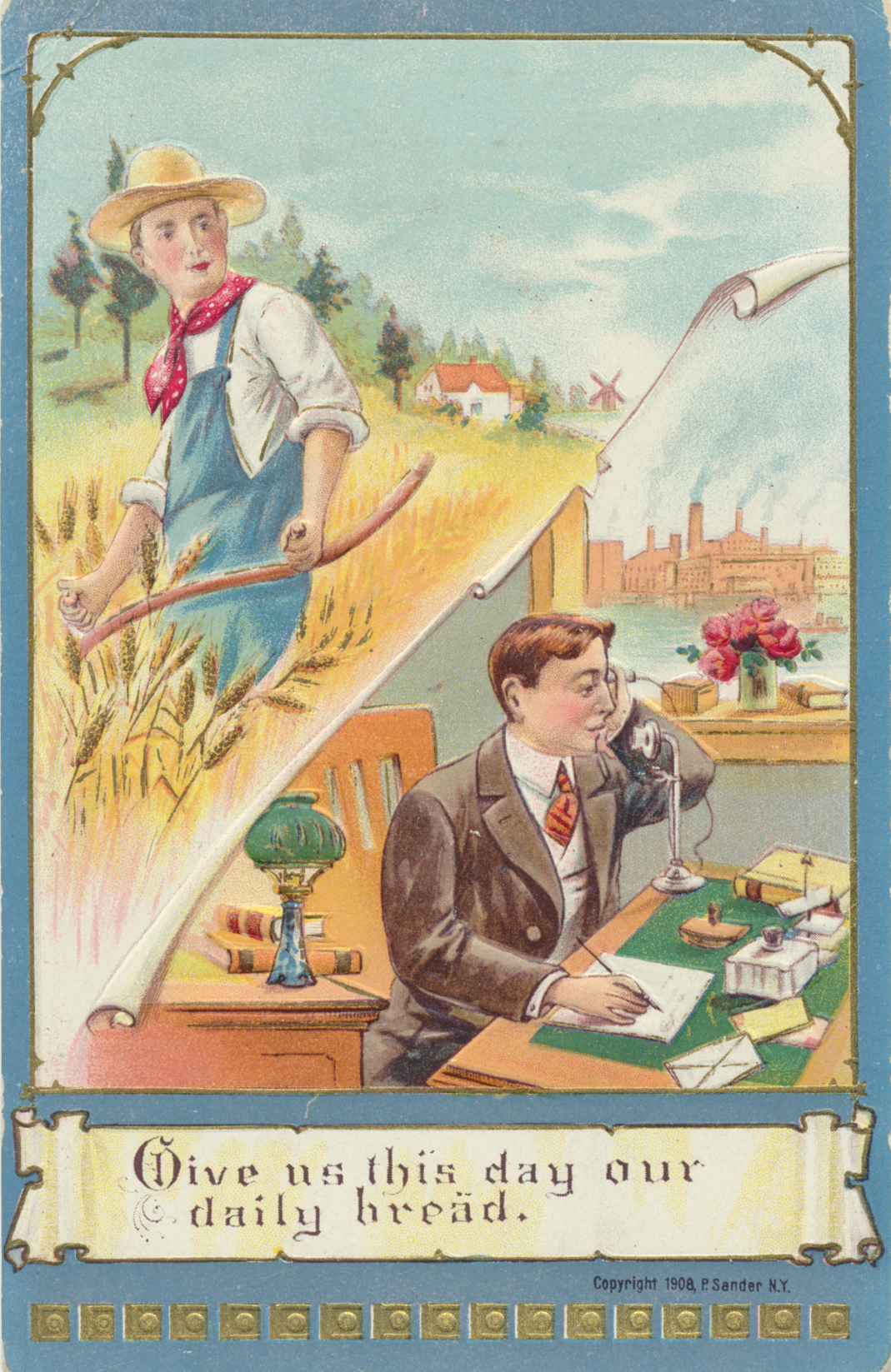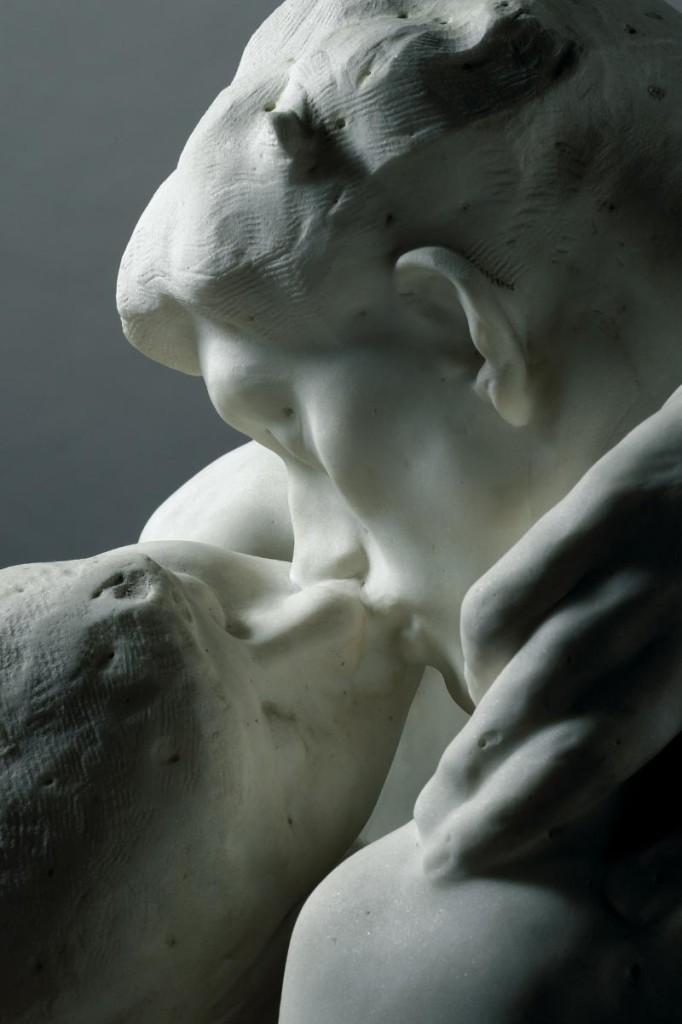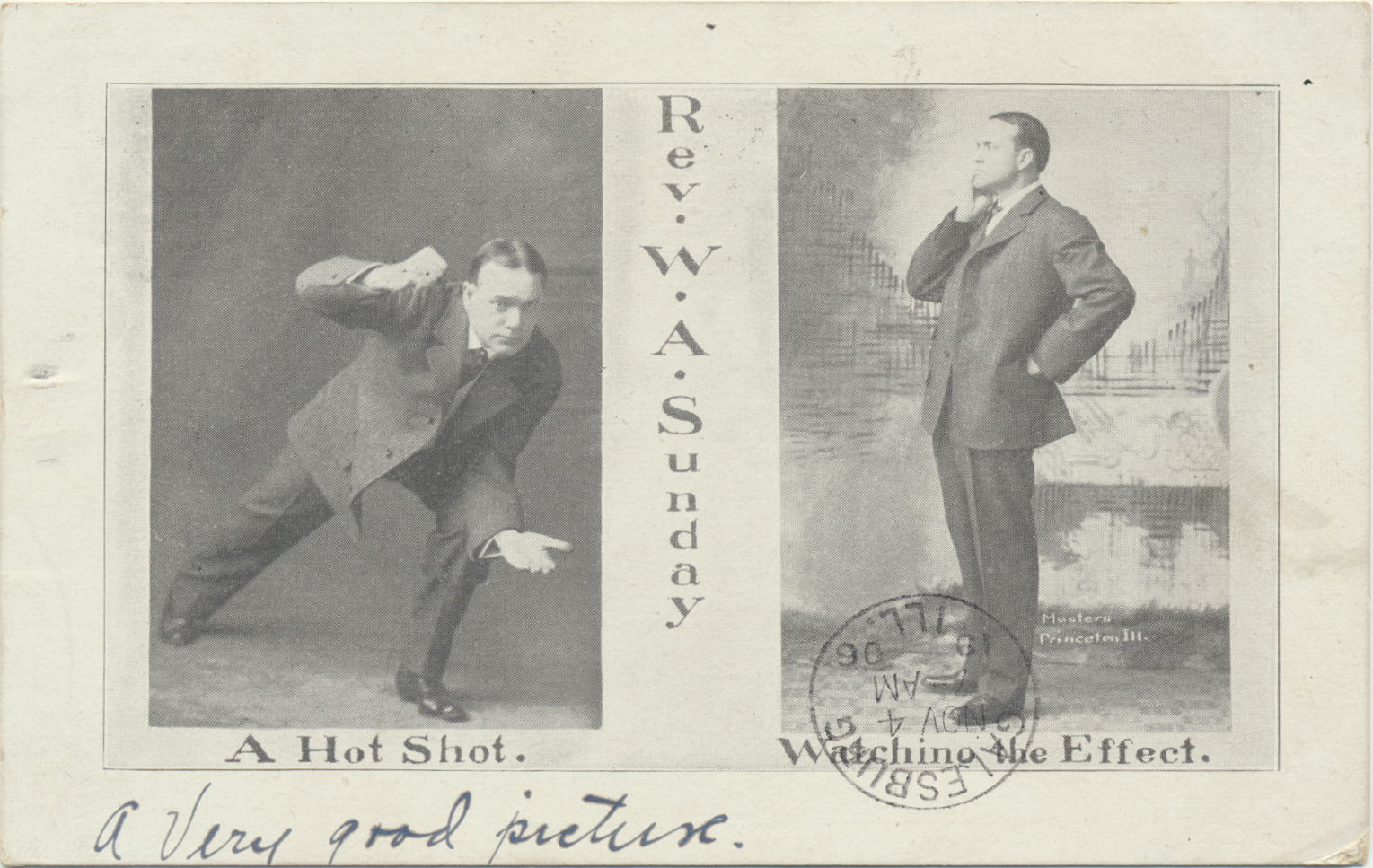
Promotional postcard of The Rev. W.A. “Billy” Sunday,
Mailed from Kewannee, Illinois, November, 1906
“A very good picture” is the only message on this card mailed from Kewanee, IL to Galesburg, IL from someone who must have attended evangelist Billy Sunday’s revival at the newly-constructed Kewanee National Guard Armory. Sunday’s campaign lasted five weeks, from October 27 to December 3, with one meeting each weekday evening except Monday, and four meetings on the weekend. According to Larry Lock (writing for The Kewanee Historical Society), the weekday meetings drew 2,000 to 3,000 each evening, the weekend meetings at least 3,000 and each Sunday evening the evangelist preached to a packed house of 4,000. By the end of the crusade, the estimated attendance was 200,000 people. The local newspaper, The Star Courier, printed the names of all 3,018 persons baptized in the Dec. 4 issue.
If you’re not familiar with The Rev. Billy Sunday, he was a most colorful character even among the colorful ranks of traveling American evangelists.
A professional baseball player, Sunday became a Christian after hearing a gospel preaching team from the Pacific Garden Mission. He began attending a Presbyterian church and there met his future wife and manager, Helen Amelia “Nell” Thompson. In 1891, Billy Sunday quit baseball to do mission work for the YMCA. Two years later he became assistant to J Wilbur Chapman, a famous evangelist of the day, and three years after that, Billy Sunday set out on his own.
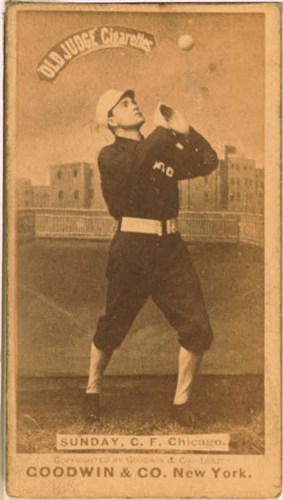
Billy Sunday, Center Field., Chicago White Stockings, c. 1887
Goodwin & Co. tobacco baseball card
Image: Wikimedia Commons
Eventually the Billy Sunday team would include Homer Rodeheaver and Virginia Asher, whose musical duets helped popularize “The Old Rugged Cross” and “In the Garden.” (You can hear a recording Rodeheaver and Asher singing “The Old Rugged Cross” thanks to the Winona History Center at Grace College.)
Billy Sunday was a fiery preacher, and a terrific showman. He would run across the stage and gesture wildly while exhorting and admonishing the crowds. He was not a theologian, and his language was often crude–some considered him indecent–but the people loved him. The reporter for the Kewanee Star Courier wrote that the first of the meetings attracted 3,500 people to hear a “coatless, collarless, cuffless, and breathless” Rev. Sunday expend “enough energy to operate a street car line.”
By the 1910’s Billy Sunday’s growing fame enabled him to preach in big cities like Chicago, Philadelphia, Boston, and New York. During the first World War he contributed significantly to the war effort, raising a great deal of money, and encouraging people to observe “meatless and wheatless days” and buy war bonds. Unfortunately, Sunday equated Christianity with patriotism, and his sermons were at times cruelly anti-German. Praying before the House of Representatives in 1918 he called the Germans “a great pack of wolfish Huns whose fangs drip with blood and gore.” It was a time of terrible anti-German sentiment in America, and I wonder if Sunday feared his connection to German immigrant grandparents (named Sonntag) would damage his reputation. Regardless, the evangelist certainly knew what went over with the audience as he inflamed their racial hatred and stirred up their patriotic fervor.
Billy Sunday also promoted Prohibition, preaching a famous “Booze Sermon” in Boston. Though typically a political conservative and sometimes accused of being a tool for big business, he sided with Progressives against child labor and in favor of urban reform and woman’s suffrage. After World War I the size of his audiences and his staff began to decline, but Sunday continued preaching until a week before his death.
People today have mixed feelings about Billy Sunday’s legacy. Some hail him as an amazing evangelist and patriot. Others are appalled by his lack of theological education and crude, sensational rhetoric. From my limited perspective, he appears to have been all those things. He was certainly great at getting people to sign a pledge, which doubtless helped his effectiveness with the war effort and Prohibition. And it’s noteworthy that his career was untouched by scandal. Unlike many, he lived the life he preached.
If you’re interested, there are videos available of the Rev. William Ashley Sunday preaching, some footage taken not too many years before his death. I can still see the baseball player in his delivery, and I can only imagine what his younger self must have been like during those five weeks in Kewanee, when this postcard was mailed.

